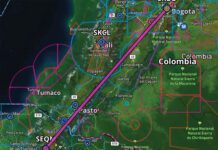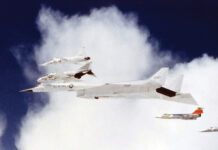Twelve thousand five hundred feet. Fourteen thousand. Fifteen thousand feet. If youre a pilot, you immediately recognize the significance of these altitudes. Each triggers different requirements for supplemental oxygen use. Most of us learn the FARs associated with these requirements early in our primary training so we can spout them back on written exams and in the oral portion of the Practical Tests. After that, we may never think much more about them.
But like most FARs, the oxygen rules are a minimum standard of safety. Of what

288
real-world relevance are the oxygen requirements of FAR 91.211? From the standpoint of safety, when should you be using supplemental oxygen?
Added Air
Supplemental oxygen, for those not familiar with the term, is additional oxygen added to ambient air. The goal is to provide enough “added air” to bring the O2 users oxygen intake up to the same level it would be at a target altitude (usually sea level). The need for additional oxygen increases with altitude, since (obviously) the higher you go, the more O2 you have to add to give the breather sea-level air. For example, one aircraft manufacturers automatically regulated oxygen system meters supplemental air at the rate of 0.5 liters/minute/person at 5000 feet, scaling up to 2.8 liters/minute/person at Flight Level 250.
Why is this important? Insufficient oxygen has very debilitating effects. According to the Aeronautical Information Manual (chapter 8 of which has an excellent overview of oxygen use), reduced oxygen intake (one form of hypoxia) impairs pilot judgment, memory, alertness, coordination and ability to make calculations. Adverse symptoms include headache, drowsiness, and dizziness-any of which directly affects the safety of your flight. Hypoxia can provide the pilot either a sense of well-being (euphoria) or belligerence-the former making it difficult for a pilot to detect anythings wrong at all, the latter tending to focus the pilots attention on blaming controllers or equipment for inaccurate flying, instead of recognizing the need to do something to fix his/her own performance.
Onset of Symptoms
Especially given that our physical reaction to hypoxia often prevents us from accurately determining whats wrong, the onset of symptoms can happen quickly. For healthy pilots, significant effects usually do not occur below about 12,000 feet above sea level. From 12,000 to 15,000 feet mental and physical symptoms begin. However, pilot performance can seriously deteriorate within 15 minutes at 15,000 feet (See the sidebar, “Time Of Useful Consciousness,” on page 14).
These “book” descriptions, however, dont take into account the full range of possible pilots. Anything that improves or restricts your ability to process oxygen will change your tolerance to altitude. If youre a marathon runner you will likely endure low-oxygen environments longer than a couch potato. Most sources say that smokers (or anyone who has smoked heavily for any period of time, even if theyve quit) start at about a mile higher altitude than non-smokers-at sea level their bodies react as though they are at 5000 to 8000 feet; when the “book” says supplemental oxygen use should begin at 14,000 feet, they really mean around 6000-9000 feet.
The AIM further tells us that alcohol and low doses of antihistamines, tranquilizers, sedatives and analgesics render the brain much more susceptible to hypoxia. Extreme heat and cold, fever and anxiety increase the bodys demand for oxygen, and hence its susceptibility to hypoxia.
O2 Accidents
You may remember the October 25, 1999, Payne Stewart crash, when a Learjet Model 35 transporting the famed golfer suffered a loss of cabin pressure over Florida, then carried its incapacitated passengers and crew northwest until exhausting its fuel over South Dakota. Other than rare events like this, does supplemental oxygen (or lack of it) contribute to airplane accidents?
Just like fatigue (which, some feel, is exaggerated by low O2 levels), we may never know the extent to which mild cases of hypoxia contribute to aircraft accidents. Knowing that oxygen use decreases fatigue, increases alertness and decision-making clarity, and improves vision (especially at night), its a good bet insufficient oxygen alone might not precipitate mishaps. But it could make us less likely to extricate ourselves from other accident-causing situations. It almost certainly affects the “poor” judgment many an accident pilot appears to have exhibited when the facts of the crash are reviewed in the calm of a later day.
Night Vision
Heres an exercise: Take off in an airplane equipped with supplemental oxygen on a clear, moonless night. Level off at 5000 feet msl (assuming safe obstacle clearance, of course) without turning on the oxygen flow. Fly about 20 minutes to half an hour. Then, turn on the oxygen flow. Almost immediately, cabin lights will appear brighter, stars will shine more brilliantly, and the number of lights on the ground will seemingly increase dramatically.
Our eyes are optimized for daylight use. Although we can see at night, it is not without significant limitations. One major impairment is that, although we depend on peripheral vision to see in the dark, the portions of our eyes that are used for peripheral vision are extremely sensitive to oxygen levels. Above about 5000 feet, our peripheral vision (the only vision weve got at night) is severely restricted. Achieving and maintaining visual “dark adaptation” strongly suggests we use supplemental oxygen for any flight above 5000 feet msl, according to the FAA. Although civilian regulations do not require nighttime O2 use at any lower altitudes than they do in daylight, FAA does recommend it above 5000 feet; military pilots have been required to use O2 above 5000 feet cabin altitude at night, emphasizing the reality of this limitation on human vision.
Dueling O2 Rules
So how did the supplemental oxygen rules come about? Why are discrepancies between O2 requirements for different types of operations?
“There is no real medical basis for the specific altitudes” chosen for the supplemental O2 requirements, according to Dr. Jack Hastings, chairman of the Experimental Aircraft Associations Aeromedical Advisory Council. The 14,000 foot requirement for full-time supplemental oxygen use “is not scientific at all.” The current rules were instead an “agreed-upon standard” that resulted from negotiations between aeromedical practitioners, FAA and private industry.
The original requirement, says Dr. Hastings, “was going to be 10,000 feet” for full-time oxygen use. This was considered overly restrictive by many, and flight physicians conceded that “12,500 feet [without supplemental oxygen] is okay for most people.” This despite the fact Englands Professor John Ernstein, considered “the father of hypoxia” medicine, argued supplemental oxygen should be required at any cabin altitude above 8000 feet and, as Dr. Hastings recounts, “urged that we consider 6000 feet as a minimum” oxygen requirement altitude.
Why does Part 91 require oxygen at certain altitudes and Part 135 (charter operations) require something else? (See sidebar, “O2 Rules”) Where does the “30-minute” stipulation come from? Dr. Hastings says “there was a national standard” for oxygen use above 12,500 feet for private operators. “Private and commercial operators in the Rockies” protested the “economic impact” of the rule, however, asking regulators give them a break and “consideration to hop over [mountain] passes and cheat the 12,500 rule for short periods of time.” Ultimately the rules we have today, which are more restrictive for pilots carrying passengers and cargo for hire, provided the “break” mountain pilots asked for. But remember, O2 rules in the FARs are a minimum standard of safety. Rules aside, how can you tell if youre safe-and likely to survive-on your current level of oxygen?
O2 Saturation
Its an easy thing to measure the amount of oxygen being transported by a persons bloodstream. Medical-type pulse oximeters-devices that measure the wearers pulse and the oxygen saturation of hemoglobin in the bloodstream-are becoming fairly common in pilots flight bags.
Pulse oximeters gently clamp on a persons fingertip, emitting a low-powered laser into the finger to be read by sensors in the device. The sensor is checking the color of blood-there is a direct correlation between the color of hemoglobin and the amount of oxygen it is carrying (with some exceptions well discuss in a moment). The oximeter then displays a digital readout of the percentage of oxygen saturation in the blood-100 percent means the blood is completely oxygen-laden, and lower percentages indicate less-than-capacity oxygen flow.
Most physicians agree that oxygen saturation in the mid- to upper 90s is optimal. Anesthesiologists closely monitor pulse oximeters during surgery and will stop an operation any time blood-oxygen content drips below about 90 percent.
“An Olympic runner at 10,000 feet has a 90 percent saturation,” Dr. Hastings relates, so readings in the low 90s are cause for a pilot to go on supplemental oxygen, to increase the flow if already breathing extra O2, or to descend to a lower altitude if bottled oxygen is not available, or he/she does not want to use supplemental oxygen.
A common pilot trick is to try to “beat the oximeter” by intentionally hyperventilating. Its true that hyperventilating results in a higher indicated pulse oximeter reading. But while oxygen is a vascular constrictor, says Dr. Hastings, tightening down blood vessels in the brain to put oxygen where its most needed, hyperventilation tends to dilate vessels, leading to light-headedness and possibly even passing out.
So although for short durations pilots may think they are “cheating” the oxygen rules by intentional, fast breathing, the reality is that they are fooling themselves…but not their brains physiology.
Also, its a fallacy that pulse oximeters are a guard against carbon monoxide (CO) poisoning. Carbon monoxide displaces oxygen in the hemoglobin, but in doing so results in a falsely high blood oxygen reading on the device. You may see a good reading on the pulse oximeter while suffering significant mental degradation from carbon monoxide. So a CO alarm is still a good idea, especially in airplanes that take cabin heat from a heat exchanger that surrounds a potentially leaky muffler or exhaust manifold (i.e., most piston-engine singles).
So…when to use O2?
The FARs give us a minimum standard of safety for using supplemental oxygen. But how can we tell when we really should be on extra O2?
Obtain and learn to use a pulse oximeter if you intend to fly above about 10,000 feet, or if you are (or have been) a heavy smoker.
While sitting on the ground (mimicking your physical inactivity in the airplane), determine your typical oxygen saturation rate. This will compensate for your physical condition and the effects of living at low or high altitudes.
Monitor your oxygen saturation in flight, and immediately descend or go on supplemental O2 if your in-flight saturation level gets below 90 percent, or five percentage points below your at-home sitting saturation rate, whichever is higher.
If using oxygen in flight and your saturation drops more than two percentage points below your on-ground sitting level, increase oxygen flow (with manual regulators) until you regain your “optimal” blood saturation.
If hypoxic symptoms appear (in you or a passenger), increase flow rate and descend to a lower altitude immediately. Some conditions (like hyperventilating, or carbon monoxide poisoning) will cause a falsely high pulse oximeter reading, one you cant trust to keep you safe.
At night, or anytime youve flown above 10,000 feet, at a minimum consider taking a 10-minute “hit” of supplemental oxygen before approach and landing, to sharpen your mind and your senses.
Evaluation of your personal need for supplemental oxygen, and that of your passengers or fellow crew, requires an honest evaluation of your physical condition, the duration of your flight at altitude, the readings you see on a pulse oximeter, and the day/night environment.
Tom Turner is a CFII-MEI who frequently writes and lectures on aviation safety.



